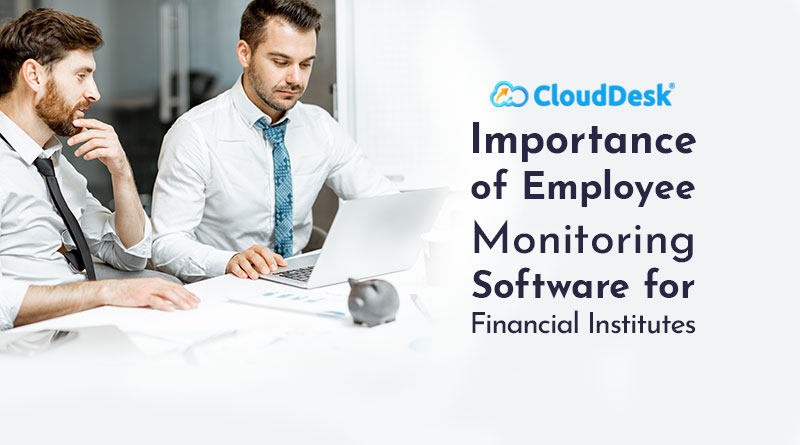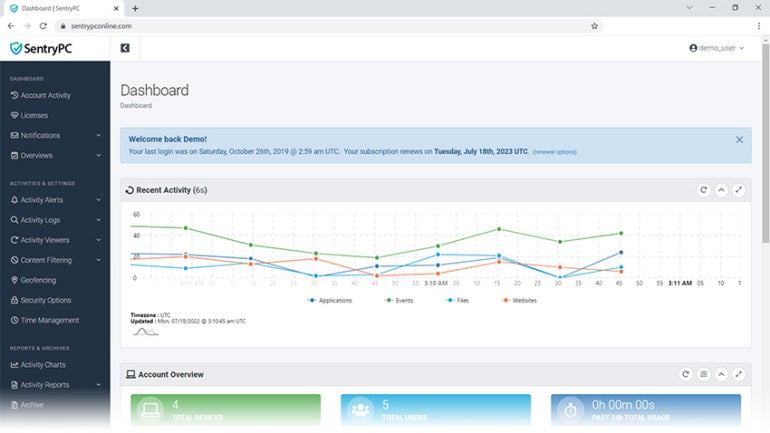Software that monitors and track the activities of employees is referred to as the software for monitoring employees. Employers can collect data regarding various aspects of employees' behaviour, including internet usage and application usage. Keystrokes can also be tracked and screenshots can be taken. The software for monitoring employees has the primary goal of increasing employee productivity, ensure that the company's policies are followed and protect confidential information and address any security concerns. When choosing a software for monitoring employees, you should consider several factors. Consider these important aspects: Features. Choose the features you require based on your organization's needs. Most common features include monitoring activity, blocking websites keystrike logging, application usage tracking along with email monitoring and report generation. Prioritize features based on your monitoring goals.
Privacy and Compliance - Make sure that the software adheres to ethical and legal standards regarding monitoring of employees. Familiarize yourself with applicable laws and regulations that apply to your region, including privacy and data protection laws. Find software that has clear and customizable privacy settings that are in line with employee rights.
User-Friendliness: Think about the software's usability and accessibility. The time will be reduced and the implementation simplified when you can use a simple interface and setup process. It is recommended to look for dashboards that are customisable and reporting tools that permit you to effortlessly understand the information taken.
Integrity and compatibility - Check that the software is integrated seamlessly with your existing infrastructure and systems that you use. This includes operating systems as well as email clients. The integration of compatible monitoring will ensure smooth operations without disrupting your day-to-day operations.
Data Security- Review the software security measures to ensure the safety of the collected data. Security protocols, encryption, safe storage of data, as well as access control are essential. Examine the security policies of the software.
Scalability- You should consider the software's ability to scale up to meet the growing needs of your company. If you are planning to increase your workforce or expand locations in the future Choose a solution which is easily scaled up to meet evolving requirements.
Capabilities to Report and Analyze- Examine the reporting and analytical capabilities of the software. Features that provide a comprehensive view into the productivity of employees, their time management, and other trends are important to look for. Customized reports and analytics can help you to make informed decisions, and identify areas for improvement.
Customer Support: Evaluate the quality of support provided by the software vendor. Verify the availability of their technical support and also. Customer support that is prompt and responsive will give you assistance when issues occur.
Cost- Examine the pricing structure of the software. Is it a single payment, a subscription, or dependent on usage? Learn about the pricing model, including any added costs for support upgrades and other features. Make sure you balance the cost of your product against its features and value.
Transparency and employee communication Be clear with your employees about the use of software for monitoring. The purpose and scope of the monitoring in a transparent manner. Discuss any concerns that they might have, and assure them of the confidentiality of their information.
Take note of these aspects to make an the right decision and choose the employee monitoring software that meets your company's needs while respecting employees' privacy. Take a look at the recommended employee monitoring services for site tips.

What Are The Different Characteristics Of The Employee Monitoring Software?
Employee monitoring software offers a range of tools to monitor and analyze employee activities. There are numerous options available in monitoring solutions for employees. The features are different based on the software but there are some options you can find. It provides a comprehensive overview of how long employees are at work.
Keystroke Logging- Keystroke recording records every keystroke typed by employees. It can help uncover productivity bottlenecks, spot unauthorised activities, and gather evidence for investigations if needed.
Screenshots or Screen Recording Screen Recording - Certain software can take regular screenshots from computer screens, whereas others record their screens live. This feature can be useful for monitoring productivity, verifying compliance or troubleshooting issues.
Internet Usage Tracking - This feature monitors the internet activities of employees which includes the websites visited, queries, and downloads. It assists in identifying excessive non-work-related browsing, possible security risks or violations of policies.
This feature tracks all apps that employees use at work. It allows you to see what applications are the most popular, and helps to identify inappropriate or illegal application usage.
Email Monitoring permits employers to keep track of all employee email. This includes sent and received emails, email attachments, as well the contents of emails. It ensures compliance with corporate policies, prevents leaks of data, investigates any suspicious activity and helps ensure compliance.
Tracking of Documents and Files This feature monitors access to files and changes in the file. It protects sensitive data as well as monitor document collaboration.
Remote Monitoring: Employers can to monitor employees remotely or if they're in different locations. Employers can keep track of employees' performance and activities no matter where they are.
Productivity Analysis Software for monitoring employees usually includes productivity analysis tools that provide insights into employee productivity, work patterns, and time allocation. These analyses help identify areas that need improvement and can help to optimize workflow.
Reporting Analytics, Visualizations, and Reporting The comprehensive analytics and reporting features produce precise reports and graphs from the data collected. These reports provide valuable insights on employee performance in time management, as well as resource allocation.
Compliance and Policy Management: Some software solutions include features that ensure compliance with both industry regulations and corporate policies. They allow employers to establish policies relating to acceptable usage of computers and internet access.
Alerts/Notifications: Alerts/notifications notify employers or managers when certain activities or events occur. You can use them to alert you about unusual behavior, like excessive internet usage or attempts to access restricted websites.
Be conscious that various employee monitoring systems can have a variety of features and functionalities. When selecting software, make certain that the features you choose are in line with your monitoring goals as well as in compliance with any ethical or legal requirements that apply to your area of operation. Have a look at the top time tracking monitoring service company for more examples.

What Is The Best Software For Tracking Employees? Does It Adhere With Compliance And Privacy Law?
The software's capability to adhere to the privacy and compliance laws is vital. The exact legal requirements differ from jurisdiction to jurisdiction, but here are some common ways that software for monitoring employees adheres to the privacy and compliance laws Consent and Notification - Numerous jurisdictions require the informed consent of employees as well as prior notification of the monitoring activity. Monitoring software for employees has tools to assist employers in communicating the policies of their monitoring clearly to staff. This could include providing written notifications, obtaining consent through consent forms, or establishing an employee manual that describes the procedures for monitoring.
Transparent Monitoring Policy - Employee monitoring software encourages transparency, by making sure that employees are aware of the kinds of information collected as well as their intended use and the extent of monitoring carried out. A clear, complete policy will help employees understand their rights in terms of privacy as well as the limitations of monitoring.
Data Minimization- To ensure compliance with privacy laws, employee monitoring software often employs data minimization principles. It means that only the essential data is collected and retained. Data that is irrelevant or overly large are discarded. The software restricts data collection to only that which is required to monitor, thus making it easier to manage privacy and compliance.
Anonymization & Aggregation Some employee monitoring software anonymizes or aggregates data to further ensure protection of employee privacy. Anonymization eliminates personally identifiable (PII) which makes it impossible to associate data with an individual. Aggregation involves the mixing of data from multiple employees to provide information at a group scale.
Secure Storage of Data and encryption- Employee monitoring software prioritizes the safety of data it collects. It generally uses secure storage methods for data and encryption methods to shield data from unauthorized access, breach or disclosures that are accidental. This includes security for data in transit and at home.
Access Controls and Restricted Permissions- To ensure compliance, employees monitoring software often gives granular access controls and permissions. Employers can limit access to monitoring data only to those who are authorized to use it for legitimate reasons like HR employees or administrators designated by the company.
Rights of Employees Rights Respecting the rights of employees respect employees' rights is essential to comply with privacy and compliance laws. Monitoring software for employees includes features that permit employees to view their own monitoring information and request changes. Employees can now assert their rights in case of privacy violations and file complaints.
Conformity to Data Protection Regulations – Employee monitoring software is designed compliance with the relevant laws on privacy of data, including the General Data Protection Regulations (GDPR) within the European Union, or the California Consumer Privacy Acts (CCPA) which are in the United States. Compliance involves implementing measures to safeguard personal information as well as respecting rights of the data subject and ensuring the lawful processing of data.
Although employee monitoring software is an excellent tool for ensuring compliance, it is important that organizations consult with legal experts and keep abreast of applicable laws and regulations in their jurisdiction. Adhering to compliance and privacy regulations requires a thorough strategy that goes beyond the software itself, including clear policies, employee education, and ongoing compliance monitoring. Check out the most popular employee monitoring company for website advice.
